You may have seen pictures of a B-52 bomber with nearly all of its vertical stabilizer missing. What happened, and how did its crew land it?
With our eyes more accustomed to airliners, it’s probably common for people to compare the size of large military jets to commercial aircraft. In these terms, the B-52 seems like an oddball. It’s not just the eight turbojet engines, in pairs. Nor is it just the fact that it’s a high-wing design or even the “bicycle” landing gear. OK, that’s a lot already, but there is more.
The basic proportions of the aircraft are odd. Its length is about the same as that of a Boeing 767-200. But its wingspan is only a bit smaller than that of the 777! The vertical stabilizer and rudder of the B-52 (particularly the later versions) are comparatively small. And finally, the sweep of that large wing is 35 degrees, more than that of modern airliners (but the same as the 707’s).
B-52 Vertical Stabilizer Versus Engines
Of course, the plane’s role, of carrying large bomb loads over large distances, was the reason behind these features. It needed to have a high-wing design, because its wingtips had to be low, to have outrigger wheels – and a low-wing would thus put the engines too low to the ground. It needed outrigger wheels, because of that bicycle landing gear. And it needed that so that its bombs could sit as near the plane’s centre of gravity as possible. So it could carry many of them.
And then there is the vertical stabilizer of the B-52. Over time it got smaller (shorter) thanks to the B-52’s eight engines. If the crew lost an engine, its missing thrust didn’t cause much asymmetry, compared to a four-engined or twin-engined jet. And this, incidentally, is part of why the B-52’s current re-engine program involves replacing eight engines with eight newer ones. Fitting the B-52 with four bigger engines instead would require an extensive systems redesign – and a bigger tail.
The size of the vertical stabilizer of the B-52 is relevant to this story. In the early 1960s, the US Air Force decided that it would start flying its B-52s at low level. This was because newer anti-aircraft missiles made the jets vulnerable at higher altitudes. But flying such an enormous aircraft close to the ground, at high speeds, introduced stresses that Boeing never designed it to handle.
Finding The Limits
So Boeing’s engineers and test pilots had to evaluate the plane’s performance and stresses in these conditions. This is what the B-52 and its crew were doing before they lost their vertical stabilizer. This was a four-person Boeing crew: three test pilots and a navigator. Their B-52 sported sensors, recording aerodynamic loads on key surfaces. As part of the test, the crew wanted to test what sort of loads the aircraft would undergo, during turbulence, at different airspeeds.
This would be a multi-hour test flight, with multiple short runs for each speed and altitude. And from early on, the crew didn’t like what they saw. The loads on the rear of the aircraft that their instruments measured were higher than Boeing’s engineers expected. As a result, the pilots abandoned the really low-level portion of the test (500 feet AGL) and started climbing. They were about to conduct a series of tests at 350 knots – when it happened.
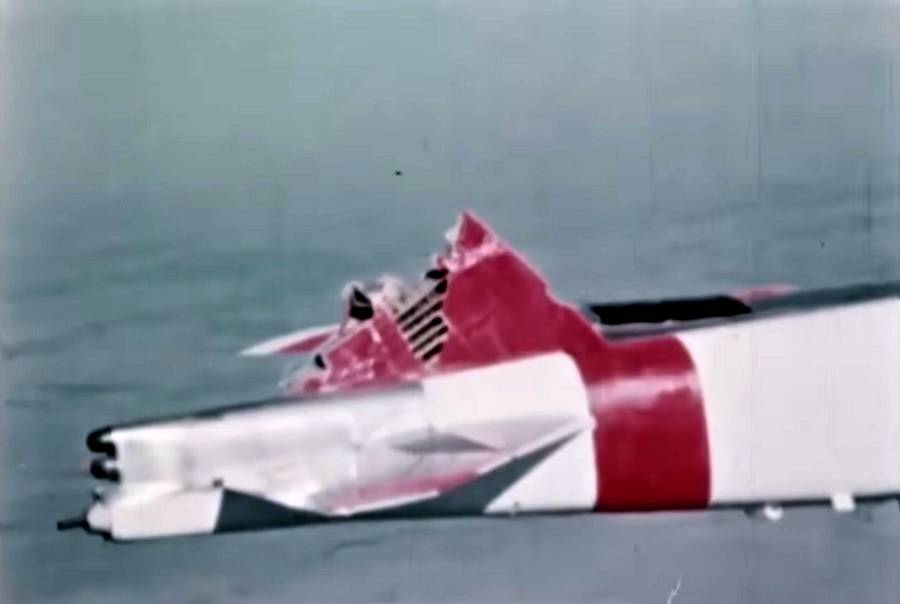
The B-52 crew didn’t know that their vertical stabilizer separated from their jet. At the time, they were at 14,300 feet MSL, but on a track parallel to a mountain range, just 1,000 below and to their left (west). There was also a 60-knot western wind component and the aircraft was doing 345 knots IAS (accelerating to 350).
B-52 Vertical Stabilizer – Clear-Air Turbulence
Engineers later established that the B-52 lost its vertical stabilizer when it hit clear-air turbulence. The phenomenon lasted 9 seconds. Afterwards, the crew immediately knew that something was seriously wrong in the back of the aircraft. The B-52 pitched up, then yawed first to the left, then to the right, with a right rolling moment – despite opposite roll controls.
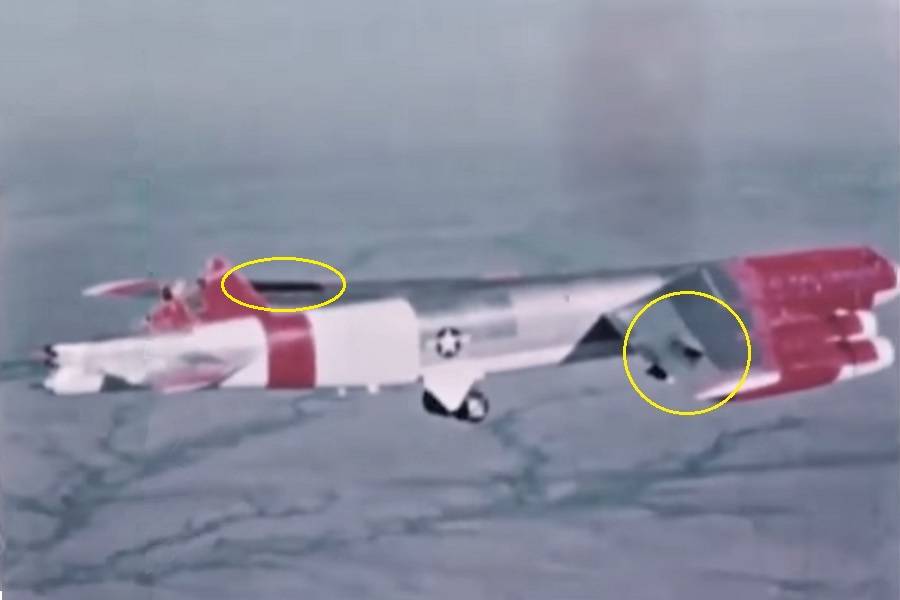
It is worth mentioning here that the B-52H doesn’t have ailerons, unlike previous versions that had a small pair. Roll control is with spoilers (air brakes, in USAF parlance). This, plus its high-sweep wing means that the aircraft has plenty of adverse yaw, that pilots counter with rudder inputs. So the missing vertical stabilizer and rudder made this B-52 quite a handful, in addition to making it unstable.
At first, the pilots called for the crew to prepare to eject. But afterwards, they realized that they had at least some control of the crippled aircraft. This was despite having limited elevator authority, and vibrating rudder pedals, that had no effect on the jet. The crew transferred fuel to forward tanks, to increase the longitudinal stability of the aircraft.
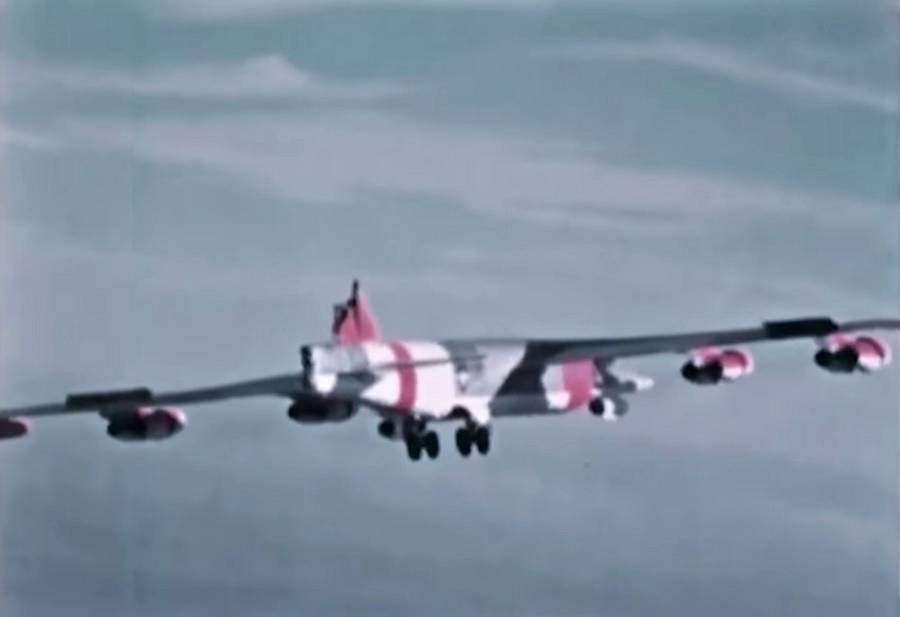
The flight test crew also deployed the outboard air brakes (spoilers). Thanks to the 35° wing sweep, those outer control surfaces are well behind the plane’s centre of gravity. Still unaware of the actual condition of their vertical stabilizer, the B-52 crew were now waiting for help to arrive. They had reported the incident immediately and called for a chase aircraft.
Reacting To The News
There was an interesting dialogue when the chase plane (an F100 fighter jet) arrived. The B-52’s chief pilot, Charles F. “Chuck” Fisher, was telling the fighter pilot (Dale Felix, another Boeing test pilot) that the aircraft seemed stable at 220 knots. Fisher added that he would handle the aircraft “pretty carefully”.
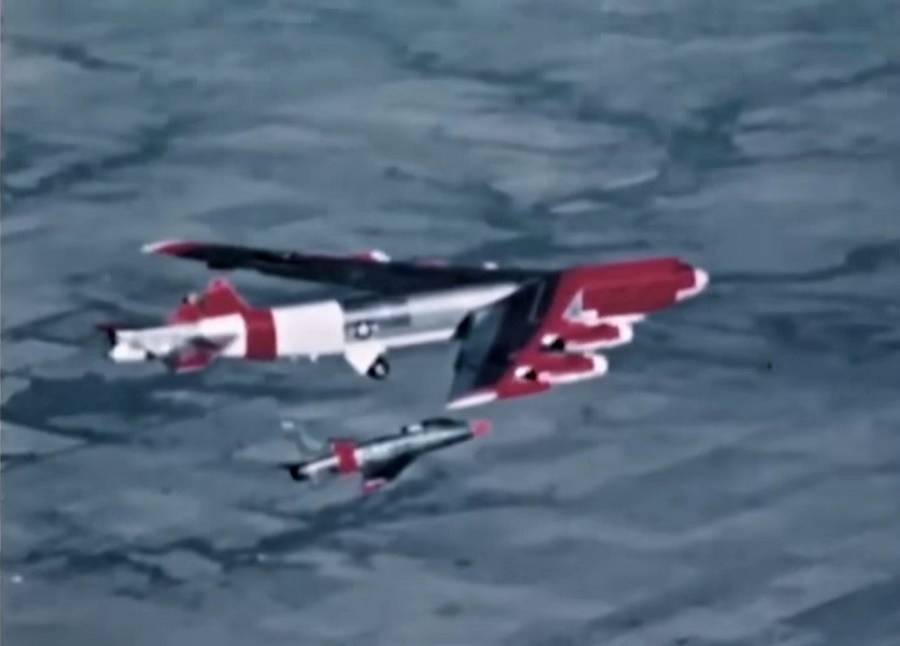
In disbelief from seeing the B-52 flying merrily without its vertical stabilizer, Felix responded: “Chuck, that’s a good idea. All of your rudder and most of your vertical fin are gone.”
A long pause followed this alarming piece of news, as the B-52 crew digested it. Finally, Fisher asked: “Don’t I even have 50%?”, to which Felix replied, “No, you don’t have 50%”. It later turned out that the B-52 pilots had lost 83% of their vertical stabilizer. The 17% still remaining was producing a lot of drag, which under the circumstances, was adding some stability. But it was also disrupting the airflow around the elevator, limiting its authority.
The pilots turned towards Boeing’s flight test base at Wichita, Kansas. Lowering the rear landing gear only was an idea that came from other members of the team, on the ground. After some trial and error, the pilots found that the aircraft behaved the best at around 210 knots, which was 30 knots above the plane’s minimum speed at this configuration.
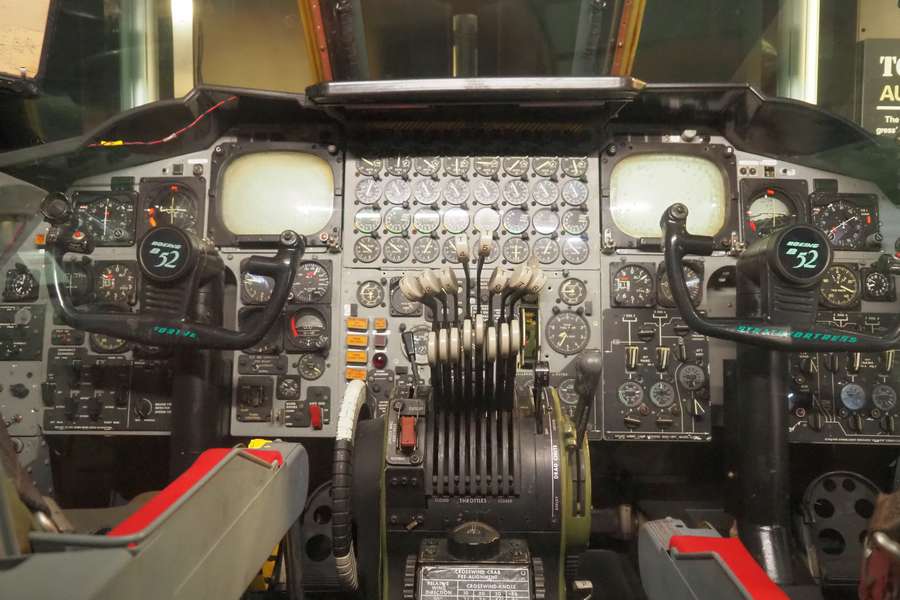
How Much Does A B-52 Vertical Stabilizer Weigh?
But they still had a busy day ahead of them. The B-52 crew had to calculate their centre of gravity, factoring in about 2,000 lbs (900 kg) of missing vertical stabilizer and rudder! Meanwhile, they realized that the weather in Wichita wasn’t on their side. So they diverted to Blytheville Air Force Base in Arkansas. There the weather was better, and the wind was blowing straight down the runway.
Another factor in the minds of the flight test crew was the instrumentation they carried on their aircraft. The data they had gathered was quite important. And learning from the circumstances that caused the vertical stabilizer of the B-52 to separate, was invaluable. But the crew still had to ensure that they weren’t taking undue risks. The silver lining of their diversion was that they and their ground support team had more time, to prepare the aircraft for landing.
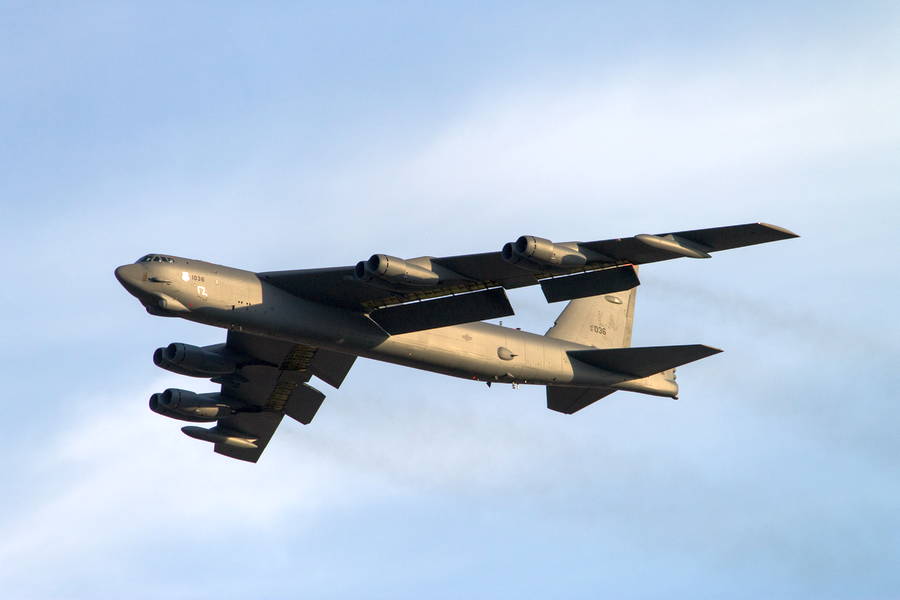
Before lowering their front main gear, the crew first extended the outrigger wheels. They, too, were behind the aircraft’s centre of gravity. Then came the front gear – and at first, things didn’t look good for the crew. As soon as the gear started travelling, the aircraft developed a yaw moment. But thankfully, this stopped when the gear was down and locked.
The B-52 minus its vertical stabilizer made a flat approach, touching down at 160 knots. During the approach, the outboard air brakes remained at position 4, while the flaps stayed up. At touchdown, all air brakes/spoilers were extended to position 6 (maximum). Between the incident and the landing, the jet and its crew had spent five agonizing hours in the air! But they were now safe, with a crowd quickly gathering to see their stricken aircraft.

The Aftermath
Boeing immediately got to work, strengthening the vertical stabilizer and the rest of the empennage of the B-52. All this was taking place in 1964. That’s about two years after the last new B-52 left the production line. After multiple updates and many aircraft retirements, USAF still has 76 of the old jets today. And their re-engine program means that they’re not going away any time soon.
Unfortunately, this story has a sad footnote. This incident took place on the 10th of January 1964. Just four days later, another B-52 lost its vertical stabilizer, this time over Pennsylvania. This was a USAF combat aircraft, and an older variant, B-52D, with a larger stabilizer. Its crew was changing altitudes to get around severe turbulence when its vertical stabilizer broke off.

Unable to control it, the pilot commanding the aircraft ordered the crew to bail out. Out of five crew members, one did not eject and perished in the aircraft. The other four all made it to the ground, most of them with injuries. Only two survived, the others succumbing to the cold. Also, this aircraft was carrying two nuclear bombs. Crews later recovered them, “relatively intact”, in the wreckage.
Obviously, this crash happened before Boeing could strengthen the vertical stabilizer of the B-52 fleet. But the data from the flight testing incident caused Boeing and other aircraft manufacturers to study the loads and stresses of turbulence on large aircraft. These lessons would eventually benefit the airliners that we all fly in, today.



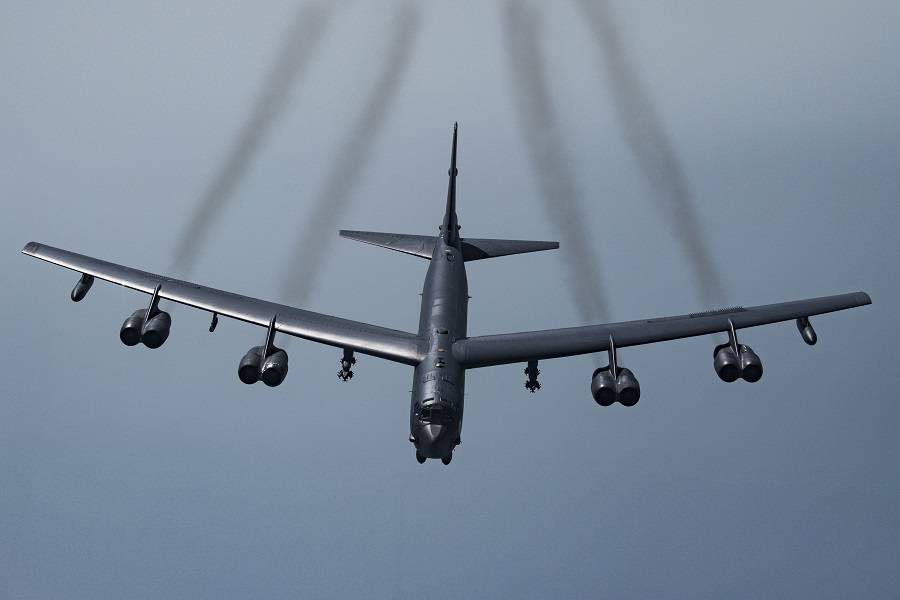



3 comments
Gordon Flygare
Anyone want to guess at the percentage of a new 1964 buff still flying today?
Like an old hammer “ten new heads and twenty new handles.”
Rigel
USAF had no problems ordering their people to fly a plane they KNEW had issues with its vertical stabilizers, costing 3 people their lives, as well as crashing two nukes into the ground.
MarkJ61
What an excellent and interesting story this is. Its clear the the military makes demands upon the aircraft manufacturers to give them specific aircraft to do specific tasks – bombers, fighters, reconnaissance and so on and the technology and development that comes with this must be incredible.
It would be interesting to see/know if any of this ever filters through to Commercial aircraft??? Bit like how NASA and space exploration gave alsorts of tech to the consumer world